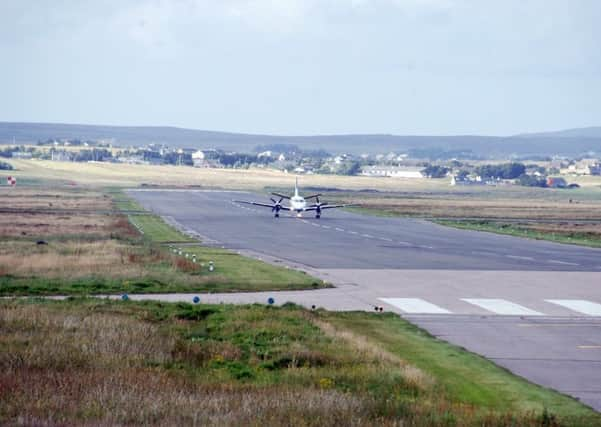HIAL sets out reasons for Inverness air traffic control centre


The project, first announced in January 2018, will change the way air traffic services are provided at seven HIAL airports by running activities in a centralised tower and surveillance centre, and modernising the way airspace is managed.
The move will mean job losses at regional airports, including Stornoway and Benbecula, and the air operator has come under criticism for identifying Inverness as its preferred location for the new centre.
Advertisement
Advertisement
However the HIAL board stated this week that it is committed to doing a community impact assessment.
Talking about the plan HIAL managing director Inglis Lyon, said: “The scoping study identifies Inverness as having the most compelling case to support HIAL’s continued delivery of its core activities.
“We have also taken the views of our staff into account and Inverness was their preferred option should relocation be required.
“Inverness is best suited from a technical, operational and staffing perspective.
Advertisement
Advertisement
“Inverness is centrally located in relation to the other HIAL airports and has direct flights to Sumburgh, Kirkwall, Stornoway and Benbecula. It has road and rail connections with Dundee and Wick.
“HIAL’s focus is, and will continue to be, on aviation service delivery.
“The airports it operates and the connections it provides are an important part of Scotland’s transport network and directly contribute to the economic prosperity and sustainability of communities, particularly in remote regions and the islands.”
“From an organisational perspective, maintaining a high value service is the primary goal and it is vital the preferred location supports HIAL to deliver its core activities, namely, safe and sustainable aviation services.”
Advertisement
Advertisement
HIAL interim chair Lorna Jack added: “We are committed to undertaking a thorough communities impact assessment that will take into account the views of local people, business leaders and local authorities to ensure the best decisions are made.
“Prioritising aviation service delivery to the islands and other locations we serve is all about supporting those communities from both economic and social perspectives.
“We know that these changes will be challenging in those particular communities, but our overall aim is to future-proof the services that they depend on.
“We will now work with our colleagues and stakeholders to establish a centre of excellence that will deliver for the people and communities we serve.”
Advertisement
Advertisement
The timescale for delivering the new centralised system and phasing is estimated at 8 to 10 years.
In total, there are 86 positions that will likely be impacted by the new Remote Towers and Surveillance Centre. There are no planned reductions in staff numbers.